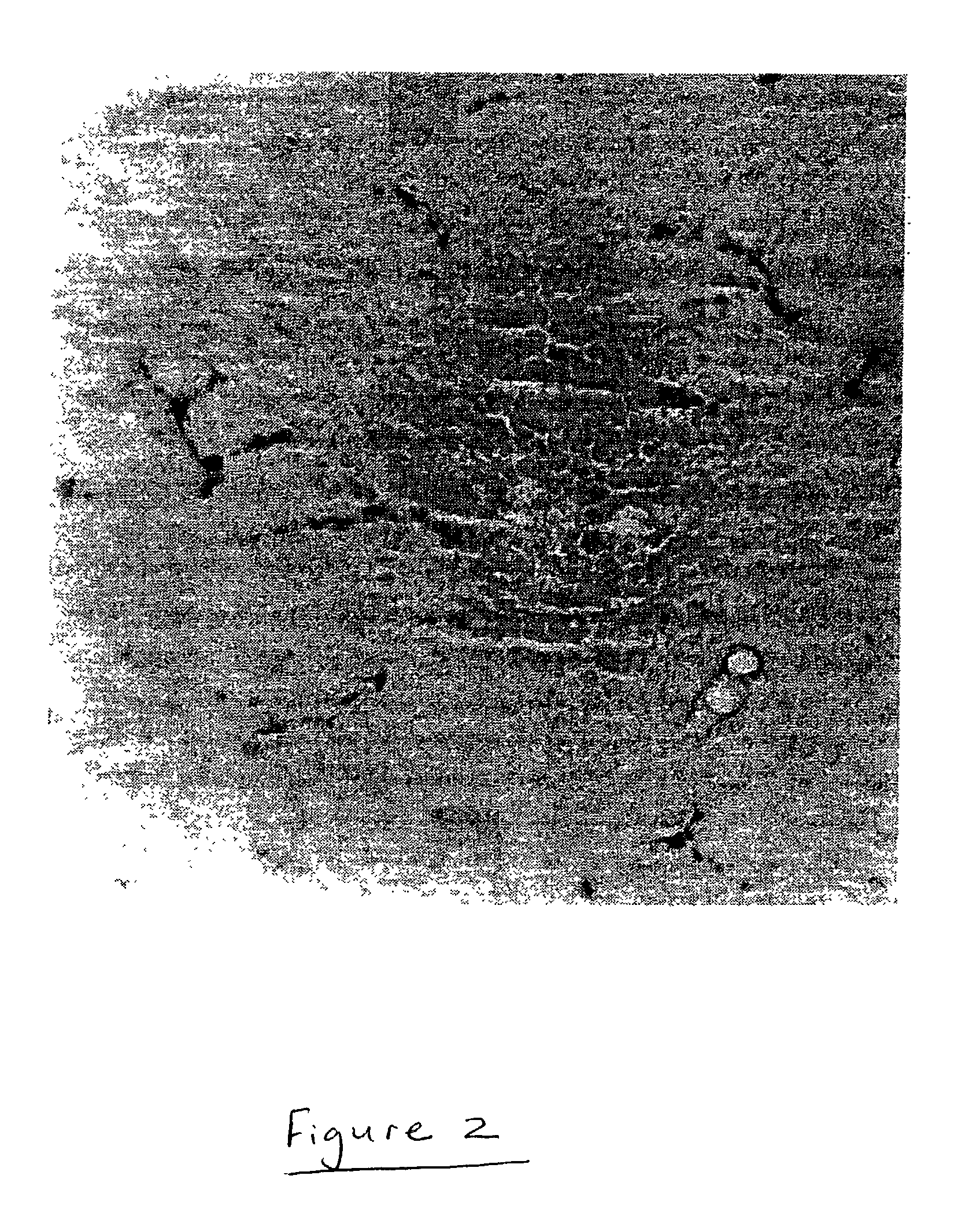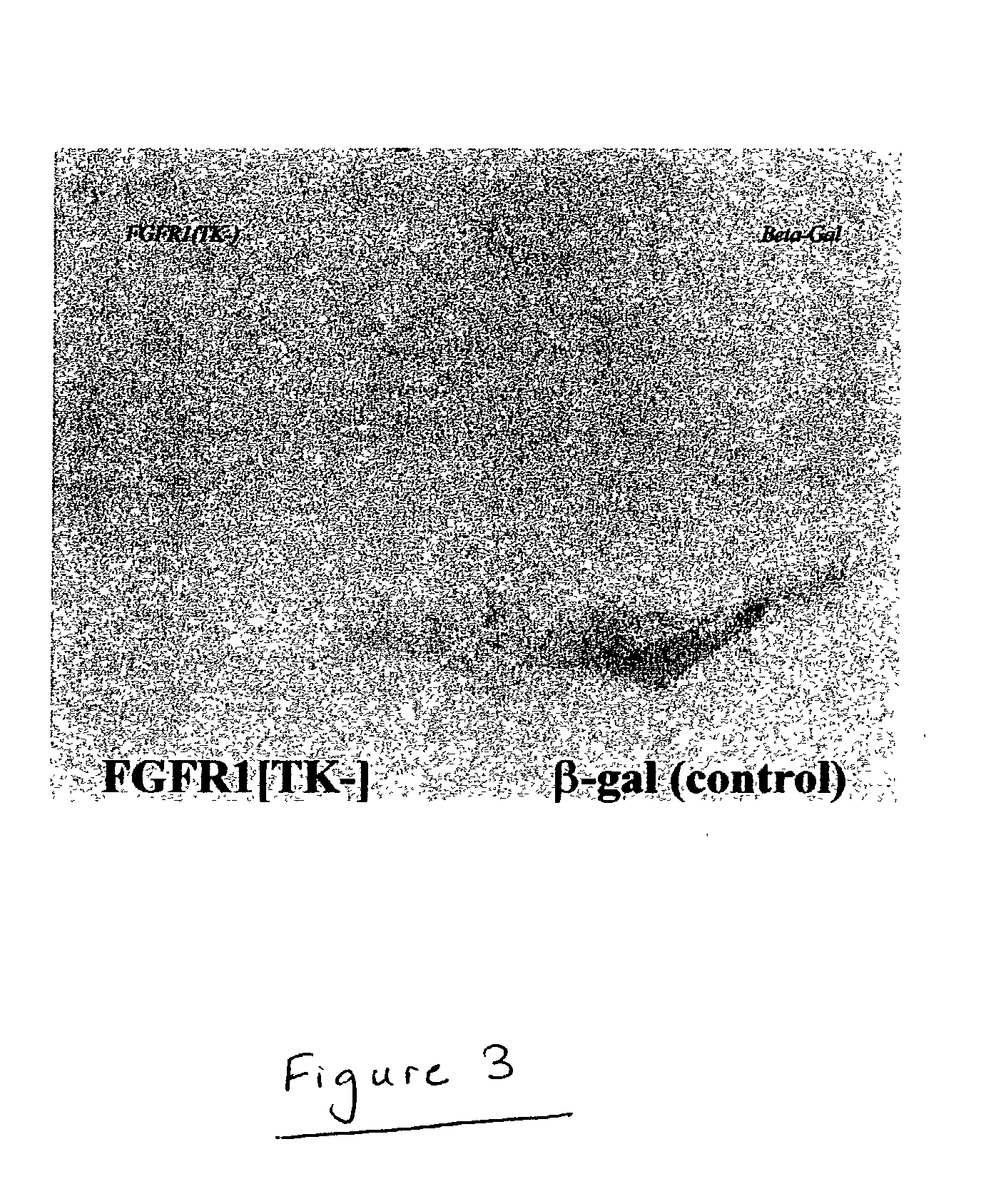Animal model for parkinson's disease and method of making same
a technology of animal models and parkinsons, applied in the field of animal models for parkinson's disease and making same, can solve the problems of slowing down the pace of such routine activities, affecting the survival rate of older patients, and affecting the quality of life of older patients
- Summary
- Abstract
- Description
- Claims
- Application Information
AI Technical Summary
Problems solved by technology
Method used
Image
Examples
example 2
[0030] To monitor the expression of the DNA constructs used to transfect cells, FGFR1[TK-] / .mu.gal-transfected animals are anesthetized and perfused first with isotonic PBS (pH 7.2) then 4% paraformaldehyde fixative. Brains are removed, cryoprotected with 30% sucrose at 4.degree. C., and then using a freezing stage microtome and systematically saving all sections are cut at about 5 mm thickness. Sections encompassing the SN can be immunostained for the human cMyc epitope (since the recombinant FGFR1 constructs have a C-terminal cMyc tag). Further, .beta.-gal expression can be detected in alternative sections using anti-.beta.-galactosidase Ab. The extent of cDNA transfection and expression can be determined using PCR (for DNA) and RT-PCR (for RNA). At each time point after transfection with FGFR1[TK-] / .beta.gal, rats can be euthanized, the brains removed and the DNA and RNA extracted from dissected SN by grinding the tissue in 0.5 ml of Trizol TM. The DNA fraction can be used to det...
PUM
| Property | Measurement | Unit |
|---|---|---|
| Time | aaaaa | aaaaa |
| Content | aaaaa | aaaaa |
Abstract
Description
Claims
Application Information
 Login to View More
Login to View More - R&D
- Intellectual Property
- Life Sciences
- Materials
- Tech Scout
- Unparalleled Data Quality
- Higher Quality Content
- 60% Fewer Hallucinations
Browse by: Latest US Patents, China's latest patents, Technical Efficacy Thesaurus, Application Domain, Technology Topic, Popular Technical Reports.
© 2025 PatSnap. All rights reserved.Legal|Privacy policy|Modern Slavery Act Transparency Statement|Sitemap|About US| Contact US: help@patsnap.com



